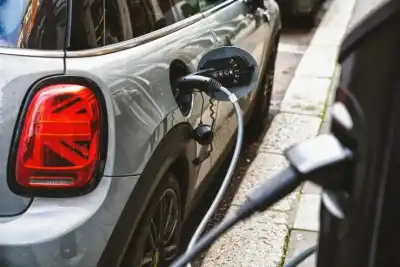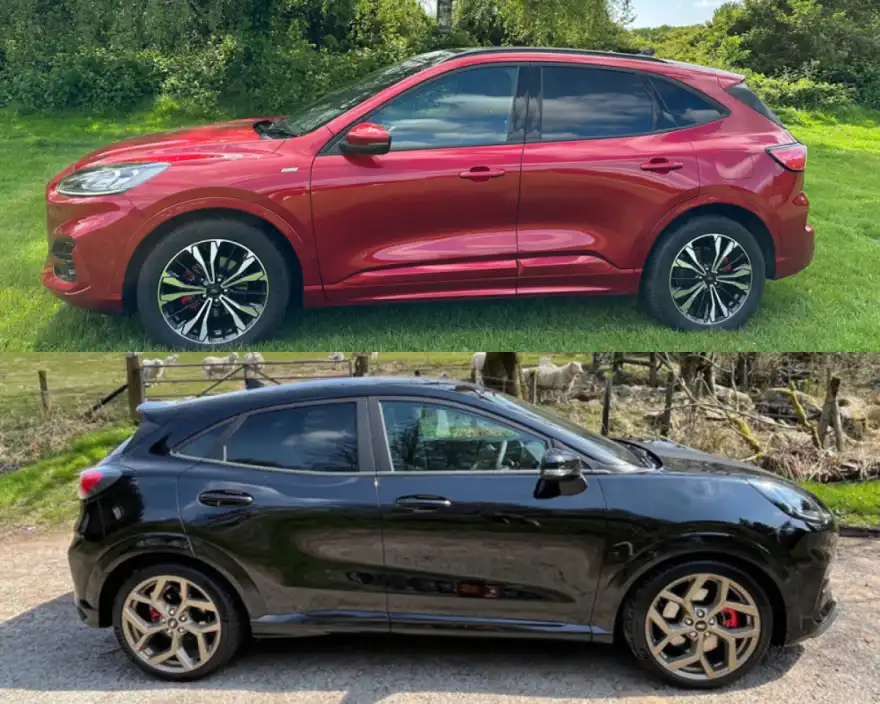
We often take similar cars from different manufacturers and look at how they fare when battling against one another. But sometimes there are similar models from the same stable that need to be explored too.
And that’s what we have here with the Ford Puma and the Ford Kuga – good old-fashioned sibling rivalry.
But before making any decisions, people need to weigh up the pros and cons of each car. They need to look at what engine they want, what trim level, think about efficiency and also practicality. Hopefully we can help a little with that decision-making.
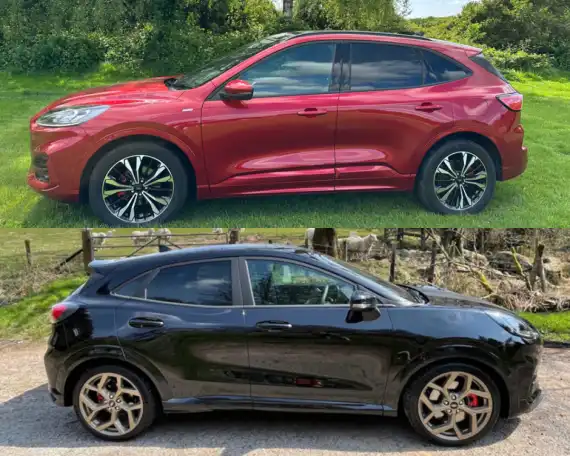
Powering the Kuga is a wide choice of engines with 1.5-litre EcoBoost petrol or diesel units, 2.0-litre petrol (mild hybrid) or EcoBlue diesel units, along with 2.5-litre full-hybrid and plug-in hybrid EcoBlue set-ups.
There are six-speed manual or eight-speed automatic gearboxes as well as CVT boxes on the FHEV and PHEV petrol electric cars.
There is also the option of two or all-wheel drive, so if you are going to be towing a caravan, the 2.0-litre 4x4 diesel model will be preferable with its 2.1 tonne towing capability. This is available in all but entry-level Zetec trim.
The fastest Kuga is the 2.0-litre diesel model with a 0-62mph sprint time of 8.7 seconds and this has the highest top speed too at 129mph.
So lots and lots of choices then. We opted for the Kuga ST-Line Edition with its 2.5-litre Duratec FHEV (full hybrid) powertrain and CVT automatic transmission. With 190PS, it could complete the 0-62mph dash in 9.1 seconds and topped out at 122mph.
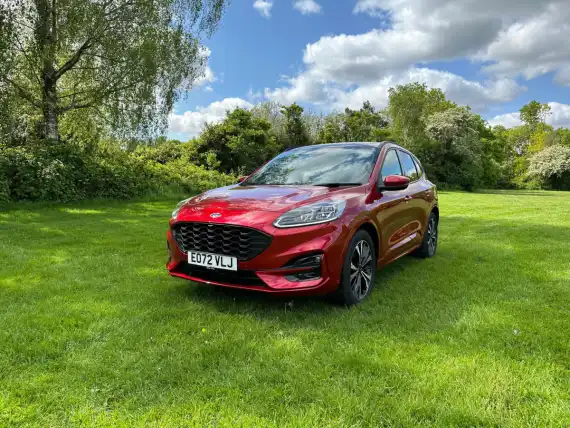
The acceleration is ultra-smooth and there is a constant supply of power on tap. Drive modes called Normal, Eco, Sport, Slippery, plus Snow/Sand assist change the driving characteristics of the car and also help you find the best set-up for the roads. For example, Sport is great fun on twisting lanes, while Comfort is ideal for long motorway miles. There is also an ‘L’ button on the gear selector dial. This is for Less Fuel Consumption and ideal in busy stop, start traffic.
The high-seated driving position means the all-round visibility is excellent and that’s a vital factor considering this is a vehicle that will probably feature regularly on the dreaded school run with cars, pedestrians and cyclists darting out from all angles.
By comparison we have the Ford Puma which was based on the ever-popular Fiesta and then injected with growth hormones for a higher driving position.
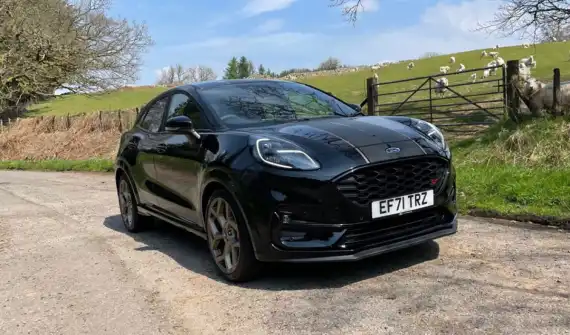
All Puma models are hybrid and powered by the company’s award-winning 1.0-litre EcoBoost Hybrid (MHEV) engine, but there is a choice of power outputs on offer with either 125PS or 155PS. In addition, dependant upon trim, there is a six-speed manual or seven-speed automatic transmission.
There is only two-wheel drive available on the Puma, but the performance figures do differ between models. The fastest is the Puma 1.5-litre EcoBoost with 200PS – that car can reach 62mph from a standing start in just 6.7 seconds and tops out at 137mph. That’s considerably faster than any Kuga can notch up and our special limited-edition Puma ST Gold Edition car was powered by that three-cylinder 1.5-litre, turbocharged petrol engine.
It featured a six-speed manual gearbox, along with drive modes called Eco, Normal, Sport and Racetrack. An ‘S’ button on the steering wheel offers instant access to the Sport setting. And it’s that mode that is most rewarding when firing down the quieter country lanes.
It was nicely balanced with a constant supply of power and could easily cope with motorway driving too. Once again, the elevated seating offers great all-round driver visibility.
And special mention to the impressive 10.5-metre turning circle, making the Puma ST perfectly suited to busy city centre driving with lots of weaving in and out of traffic.
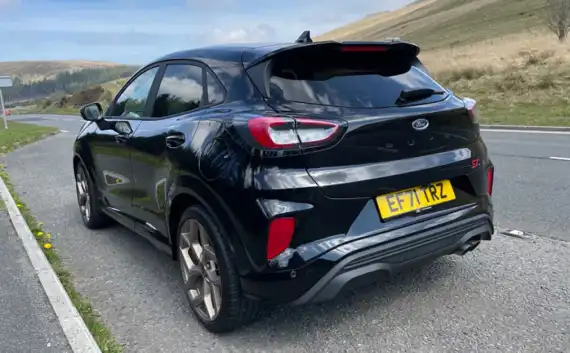
Price
The Kuga, which is a more practically-sized SUV, is available in grades called Zetec, Titanium Edition, ST-Line Edition, ST-Line X Edition and Vignale with prices ranging from £30,780 and rising to £35,970.
We tested the Kuga ST-Line Edition with the 2.5-litre FHEV technology costing £38,025, increased to £42,795 due to options such as Lucid Red paintwork (£850), upgraded alloy wheel (£600), a power-opening panoramic roof (£1,045), a retractable tow bar (£625), a Winter Pack that added heated front and rear seats plus a heated steering wheel (£550) and a Driver’s Assistance Pack that introduced a raft of safety features (£1,100).
The Puma is an SUV-inspired compact crossover model that’s also available in a wide range of trim levels called Titanium, ST, ST-Line, ST-Line X, ST-Line Vignale and Vivid Ruby Edition with prices starting from £24,940 and rising to £31,070.
Of course, there have been special editions along the way too. We tested the Puma ST Gold Edition last year. This model’s name was selected by the public via a social media vote. Brave considering the Boaty McBoatface naming incident a few years back! So ‘Gold Edition’ meant Ford got off quite lightly.
This model sold out rapidly but the elite badging meant Ford could add an extra £2k to the standard Puma ST price at the time resulting in a price-tag of £33,125. And the Driver Assistance Pack bumped up matters by a further £600.
Both cars can also be personalised so customers can put their individual stamp on the vehicle via a number of paintwork colours, alloy choices and optional packs.
Practicality
These days SUVs come in all shapes and sizes and that obviously impacts on the amount of passenger and boot space available. The Ford Kuga stretches between 4,614mm and 4,629mm dependant on trim level and is 2,178mm across (with mirrors). It is from 1,666-1,680mm tall (again depending on the trim).
Cabin space is superior on the lager Kuga model and storage room is also larger. Not surprising really as it is a bigger car! The boot can accommodate 575-612 litres of kit up to the roof with all the seats upright. Drop the split-folding rear seats and that capacity increases considerably to between 1,481 and 1,534 litres. If you prefer a mini steel spare wheel as opposed to a tyre repair kit, that limit is reduced slightly.
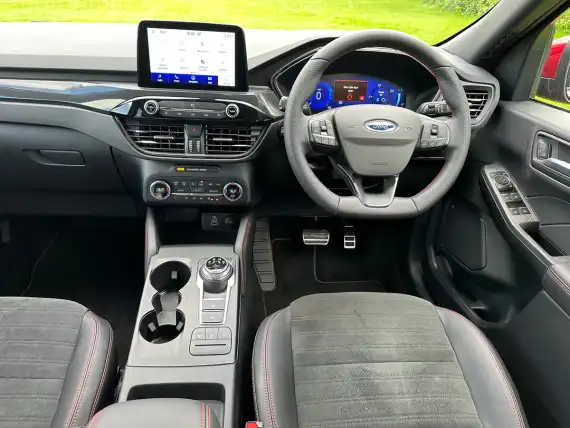
By comparison, the Ford Puma is not quite so large. It is between 4,186 and 4,226mm long, 1,805mm wide and 1,554mm in height. As a result, it’s not as roomy inside the cabin as the Kuga, but there is ample space for three children to sit comfortably in the back.
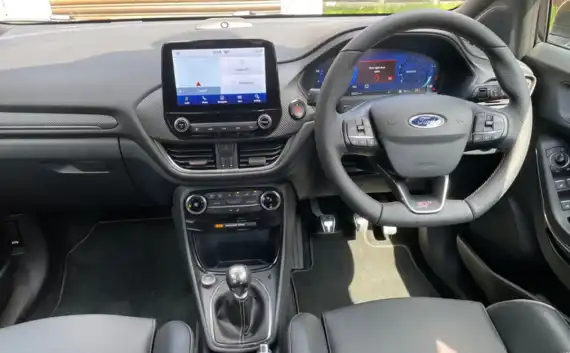
The boot capacity is 466 litres, increasing to 1,200 litres with the 60:40 split-folding rear seats dropped flat. But we have to mention the Puma’s Megabox – an extra storage area beneath the boot floor which can be washed out and is perfect for carrying muddy boots, or in our case transporting a whole load of new bedding plants.
Efficiency
Efficiency is often a key factor when buyers are choosing a car and the wide choice of Kuga powertrains means there is likely a version to suit all requirements. For anyone who can make use of plug-in hybrid technology you could see in excess of 250mpg. But we should stress that would be with the car’s EV-only range used to the max.
The 1.5-litre EcoBlue diesel unit can deliver 56 to 60mpg while the entry-level EcoBoost petrol unit with 150PS can offer fuel efficiency around the 42mpg mark.
With lots of extra costs such as road taxes and Benefit in Kind company tax ratings based on carbon emissions, then the best option would be the PHEV version with just 23-25g/km. It’s also worth remembering that more and more cities are introducing ultra-low emission zones, so if lots of city driving is expected this is an important factor to consider too.
Our test car, with the full hybrid EV technology, could deliver a combined 48.7mpg with carbon emissions of 134g/km. And we were seeing very close to the official fuel economy figure during our test drives.
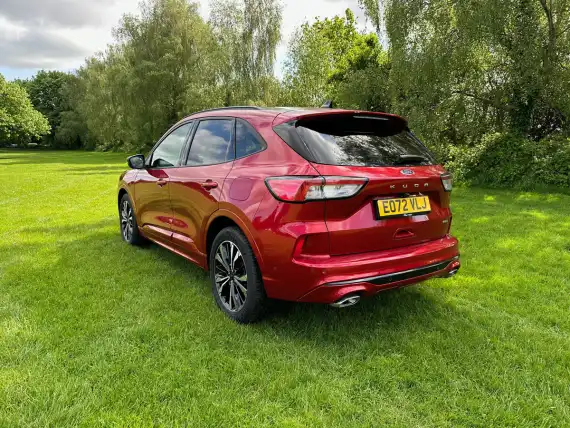
The Ford Puma efficiency figures also range considerably depending what powertrain is being tested. For the best day-to-day running costs the 1.0-litre EcoBoost powered cars with 125PS and a six-speed manual gearbox can deliver 51.4 to 52.3mpg. This car also has the best CO2 figure with a combined 122-124g/km.
Our Puma ST Gold Edition model could deliver a combined 41.5mpg with carbon emissions of 155g/km.
So, which takes your fancy?
Both the Ford Kuga and the more compact Puma have their individual charm and appeal. Both feature a good choice of trims and powertrains so there should be a car to suit everyone.
We found it really hard to split them. Perhaps the Kuga takes the plaudits simply because it is more practical and has the ultra-low emissions figures to cope with city dwelling these days, but if that’s not a factor then the Puma wins.

